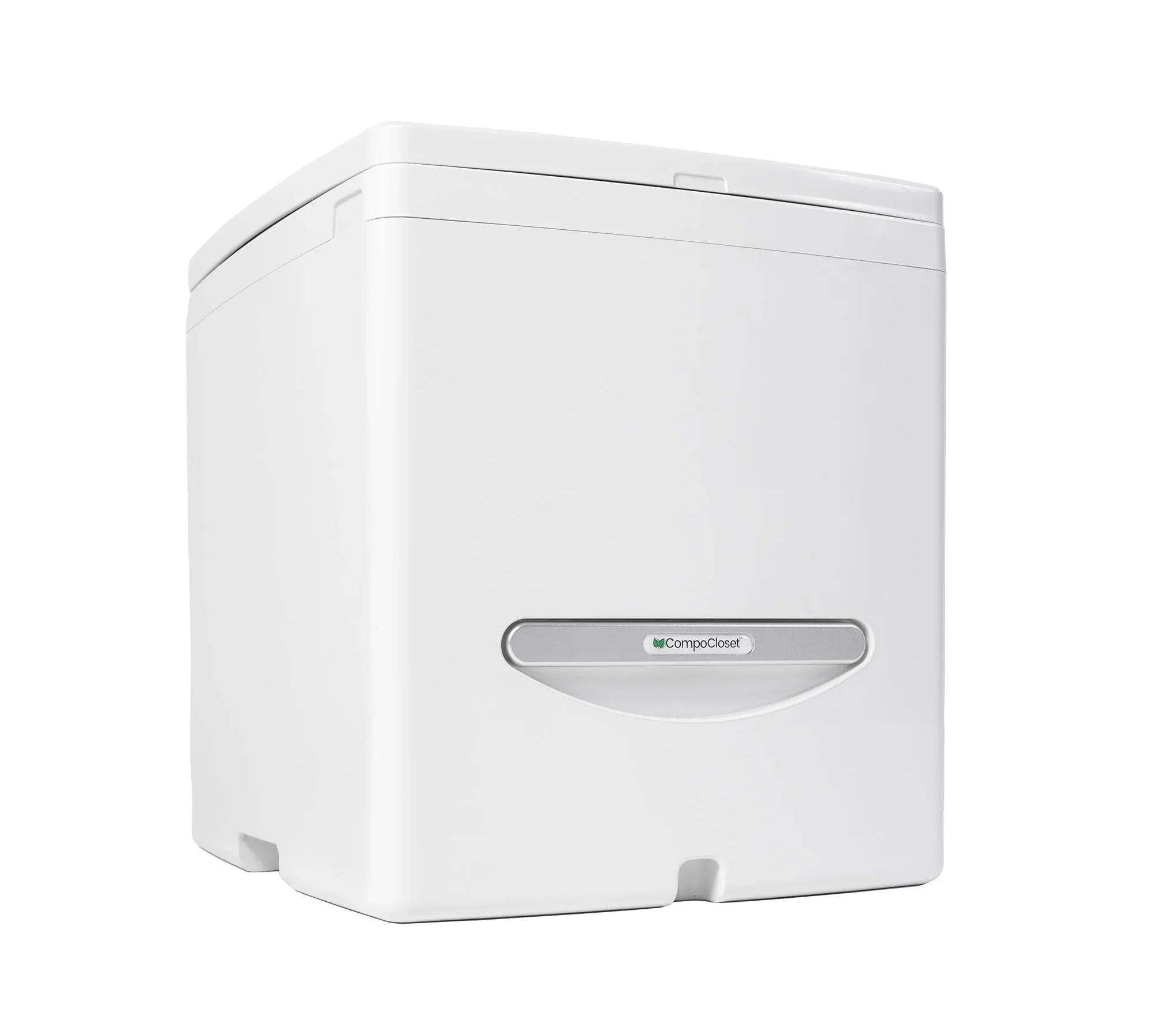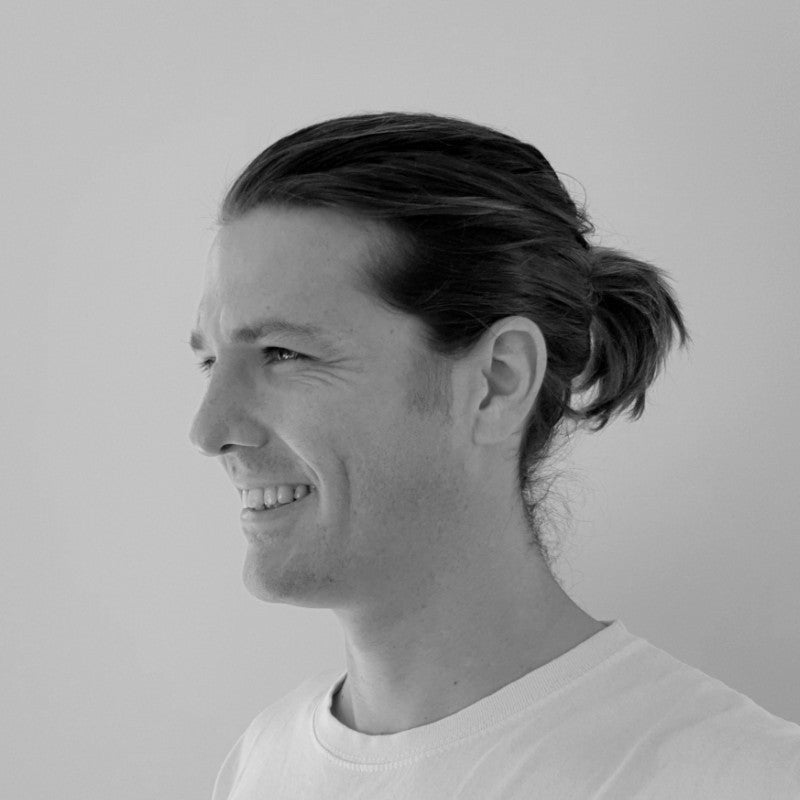Are you noticing a build-up of condensation in your compost toilet? Questioning where it’s coming from? We have the answers!
TL;DR: Why is there Condensation in Your Composting Toilet?
The simplest answer is that the composting process creates a lot of heat and excess condensation can build up when the temperature or environment changes and unbalances what's happening in the decomposition process.
The good news is, there are various ways to solve this issue, including ensuring your toilet is properly ventilated, adding more dry carbon material, and mixing solids regularly (if your toilet has an agitator).
In this guide, we’ll take you through the possible reasons for a moisture build-up in your portable composting toilet and how to tackle it. Let’s dive in!
Is Condensation in Composting Toilets a Bad Thing?
First, let’s clarify that some condensation is actually a good sign because it shows that the composting process is working effectively. Condensation in Cuddy is a common occurrence because the composting process (even just the starting point) generates heat, which can cause the inside of the toilet to become humid.
Too much moisture, however, can be problematic and create a sticky, smelly environment in your solids bin. But don’t worry! The remedy for a composting toilet with too much moisture is easier than you might think.
Why is there condensation on my compost toilet?
Condensation in your compost toilet can be attributed to a combination of factors, with temperature and humidity being the primary culprits. A little condensation is no cause for concern since the natural decomposition process generates heat and, therefore, can cause moisture to build up.
However, there may be a few reasons for moisture build-up to become excessive.
Temperature fluctuations cause excess condensation
Condensation occurs when warm, moist air from inside the toilet (from the start of the decomposition process) comes into contact with a cooler surface, like the lid or inside the toilet’s shell. typically the toilet lid. As a result, the moisture in the air condenses on the cool surface and can drip back into your solids bin.
This temperature difference can be a result of changes in environmental conditions as well, making condensation a year-round concern in certain environments.
Humidity levels can affect condensation inside the container
Bathrooms are typically humid areas to begin with. High humidity levels in the restroom or the surrounding environment can contribute significantly to condensation inside the toilet container.
If you have a portable composting toilet, then wherever you are, road or sea, you will likely experience environmental humidity changes throughout your journey.
What Happens if my Composting Toilet is Too Wet Inside?
While it is true that the natural composting process relies on a certain level of moisture, excess wetness in your solids bin can lead to a range of problems. This can slow the initial breakdown of solids in your toilet, leading to unpleasant smells, mold, and difficulty when emptying your solids bin
Here is what may happen if your composting toilet is too wet:
Foul odors
Excess moisture can lead to unpleasant odors inside and around your toilet due to an imbalance of good aerobic bacteria to foul-smelling anaerobic bacteria. These odors can be a nuisance, especially in small spaces like conversion vans, RVs, boats, and tiny homes. A properly functioning composting toilet should not smell bad.
Slower initial decomposition process
A solids bin that is too humid and wet can slow the initial decomposition process. This means human waste may not start to break down as efficiently as it should, potentially leading to emptying the bin more frequently. Additionally, this will cause longer wait times if you wish to add solids to a compost pile to finish the composting process.
Mold growth
Excessive moisture anywhere is a prime environment for mold growth. Not only can mold affect how your composting toilet works, but it can also, if left unchecked, pose health concerns for the occupants of your living space. Mold is not common, but it should be noted for those with sensitivities to mold allergens.
We should also make a note here that good bacteria (mold) in your compost is normal, and helps with the initial (and ongoing) breakdown process. You can tell the difference between the two by how they look: Good bacteria look like streaks or patches of white mold running through your solids bin (you might also see this type of good bacteria in a compost pile).
Harmful mold usually forms in patches around the toilet edges and darkens in color over time.
Solutions for Managing Excess Condensation in Composting Toilets
Managing moisture in a composting toilet is one of the top questions we get asked about. Here are our tips on how to remedy any excessive condensation challenges, whether your toilet is in a regular bathroom, RV, boat, or campervan.
1. Make sure you have proper ventilation
Ventilation is a critical component of managing condensation in your compost toilet. By ensuring proper airflow, you can maintain consistent temperature and humidity levels.
Consider the following ventilation options for your composting toilet set-up:
- External Venting: The most effective way of managing moisture buildup in your composting toilet is by venting it externally. This circulates the air inside your toilet, bringing in fresh air and sending out old, humid air. We offer two aftermarket external venting options for Cuddy: a venting carbon filter that installs inside Cuddy, and an external venting kit for when Cuddy is installed in a more permanent location.
- Internal Fan: We designed Cuddy to be the best portable composting toilet on the market – so we included an internal fan with our final design. The internal fan helps control moisture levels inside the toilet and reduces unpleasant odors that might arise from excess moisture.
- Exhaust Fans: Installing exhaust fans in your bathroom or toilet space helps circulate air in the room, reducing humidity and condensation.
- Open Windows: If possible, open windows to let in fresh air. This is especially effective in RVs, tiny homes, boats, and cabins where natural ventilation is a viable option.
- Roof Vents: Roof vents or attic fans can help expel warm, moist air from your living space, minimizing the chances of condensation.
Here’s an easy guide on YouTube on how to vent Cuddy externally to ensure even more ventilation.
2. Keep an eye on the moisture in your solids bin
Regularly checking the moisture levels in your solids bin will help you catch excess condensation in your composting toilet quickly. If your solids are too wet, take the following steps to rectify the issue:
- Add Moisture-Absorbing Materials - Incorporating materials like sawdust, peat moss, or coconut coir into your solids bin will help to absorb excess moisture and help balance the ideal humidity ratio. Better yet, choose the right compost medium from the start to reduce risk if a soggy toilet.
- Turn and Mix - Regularly turning and mixing your solids helps distribute moisture evenly, preventing localized wet spots that can lead to condensation. This is why we built an agitator inside Cuddy’s solids bin for easy mixing management!
- Line With Paper Towels: Not our favorite option, but for minimal moisture control or one-off instances, you can put some sheets of paper towels between the outside of the solids bin and the inside of Cuddy’s shell to help absorb some excess moisture. This comes in handy for quick fixes or random humidity spikes.
3. Use a dehumidifier in extreme conditions
In high-humidity environments, using a dehumidifier in the same space your toilet is being used can be an effective solution to reduce overall moisture levels. Dehumidifiers remove excess moisture from the air, creating a more comfortable environment and preventing condensation from forming. However, dehumidifiers do require a lot of energy to run, so depending on your situation or set-up, this might not be doable for you.
Compost Toilet Condensation in Winter and Summer
To manage condensation effectively in the winter and summer months, you may need to make seasonal adjustments based on the unique challenges of different weather conditions. Here's how to address condensation in both winter and summer.
- Winter: In colder weather, focus on preventing the inside of your composting toilet from getting too cold. Insulate the chamber by skirting the base and maintaining a comfortable indoor temperature to reduce condensation.
- Summer: During the summer months, emphasize airflow to reduce both heat and moisture. Proper ventilation, fans, and open windows can help maintain a cooler, drier environment.
Condensation in Your Composting Toilet doesn’t Have to be Scary
Condensation in your compost toilet is not a problem or concern when managed effectively. Proper ventilation, insulation, and moisture control are key to ensuring your toilet remains efficient, odor-free, and problem-free.
Whether you're in a campervan, RV, sailboat, tiny home, or off-grid set-up, these tips will help you enjoy a sustainable sanitation solution in all seasons.
Remember, a well-maintained composting toilet contributes to a more sustainable lifestyle, making it an excellent choice for those seeking eco-friendly alternatives for waste management.






